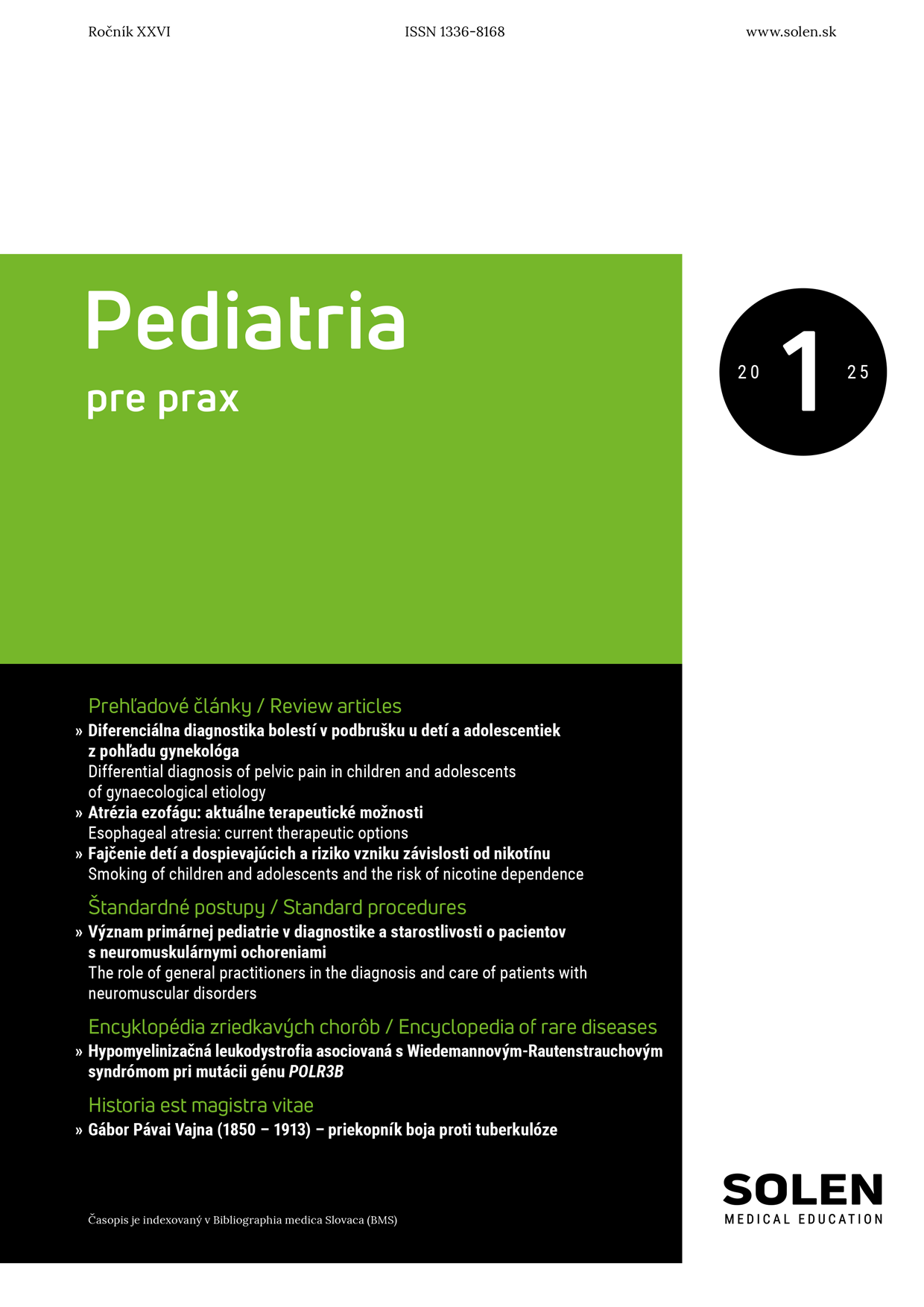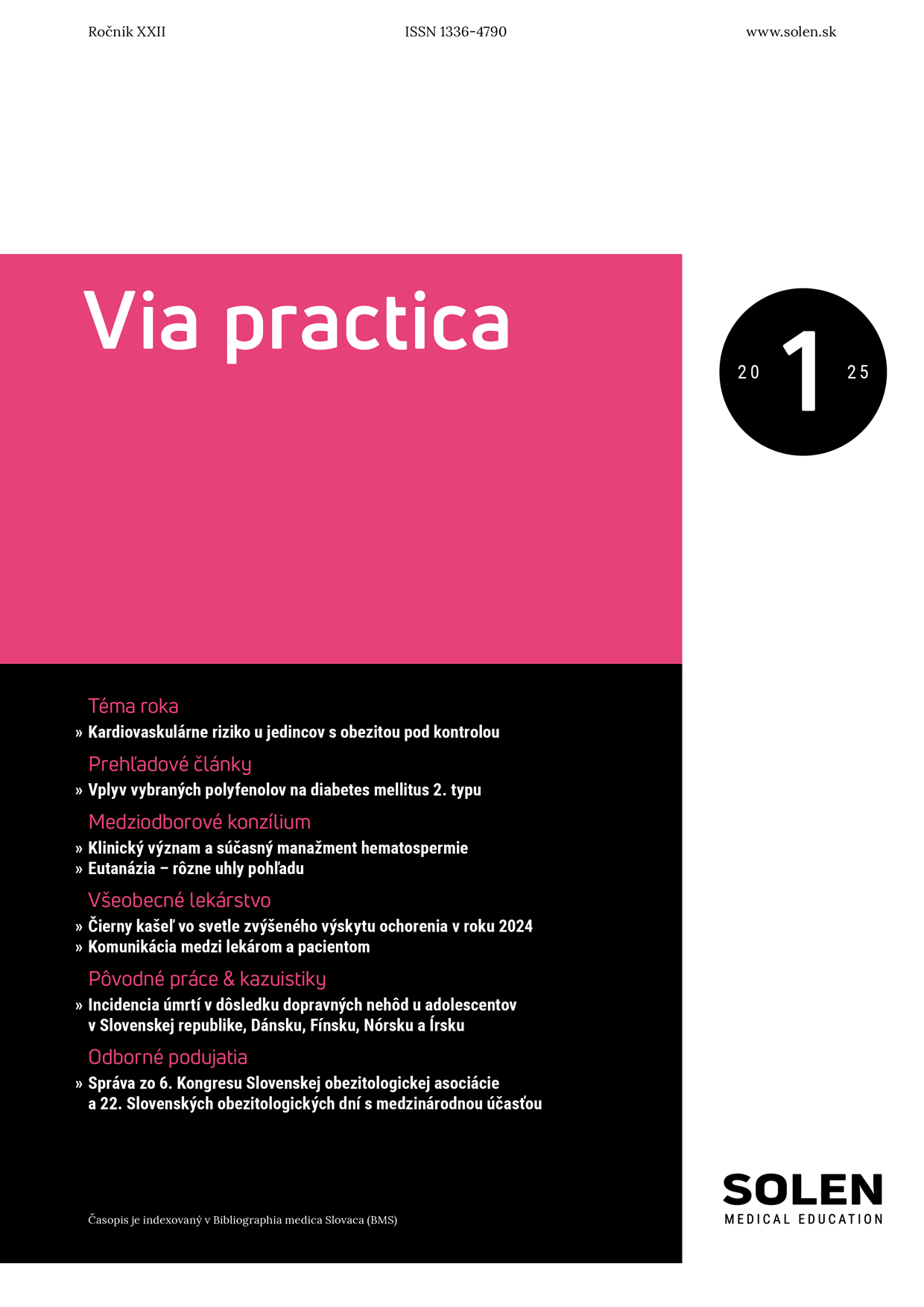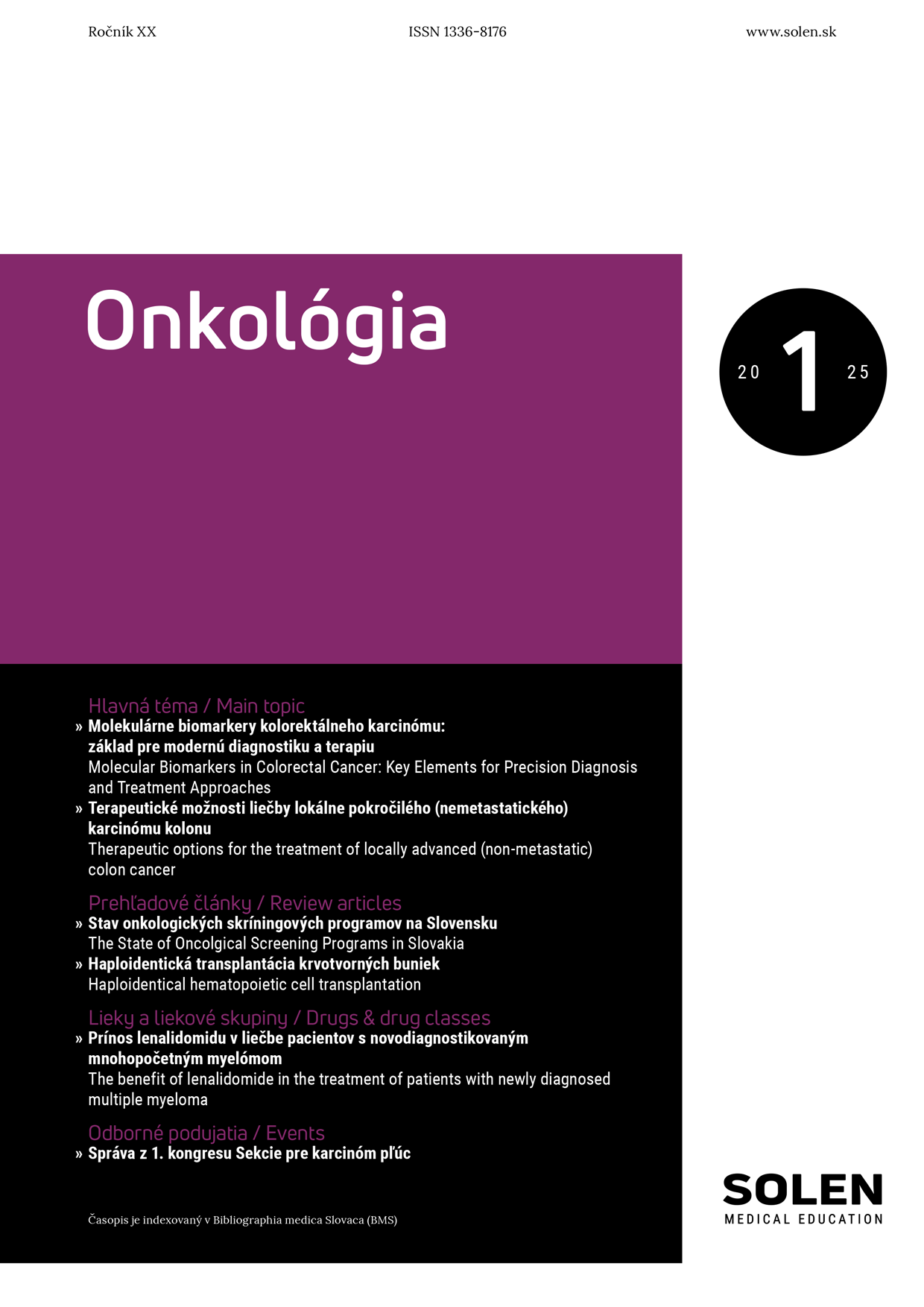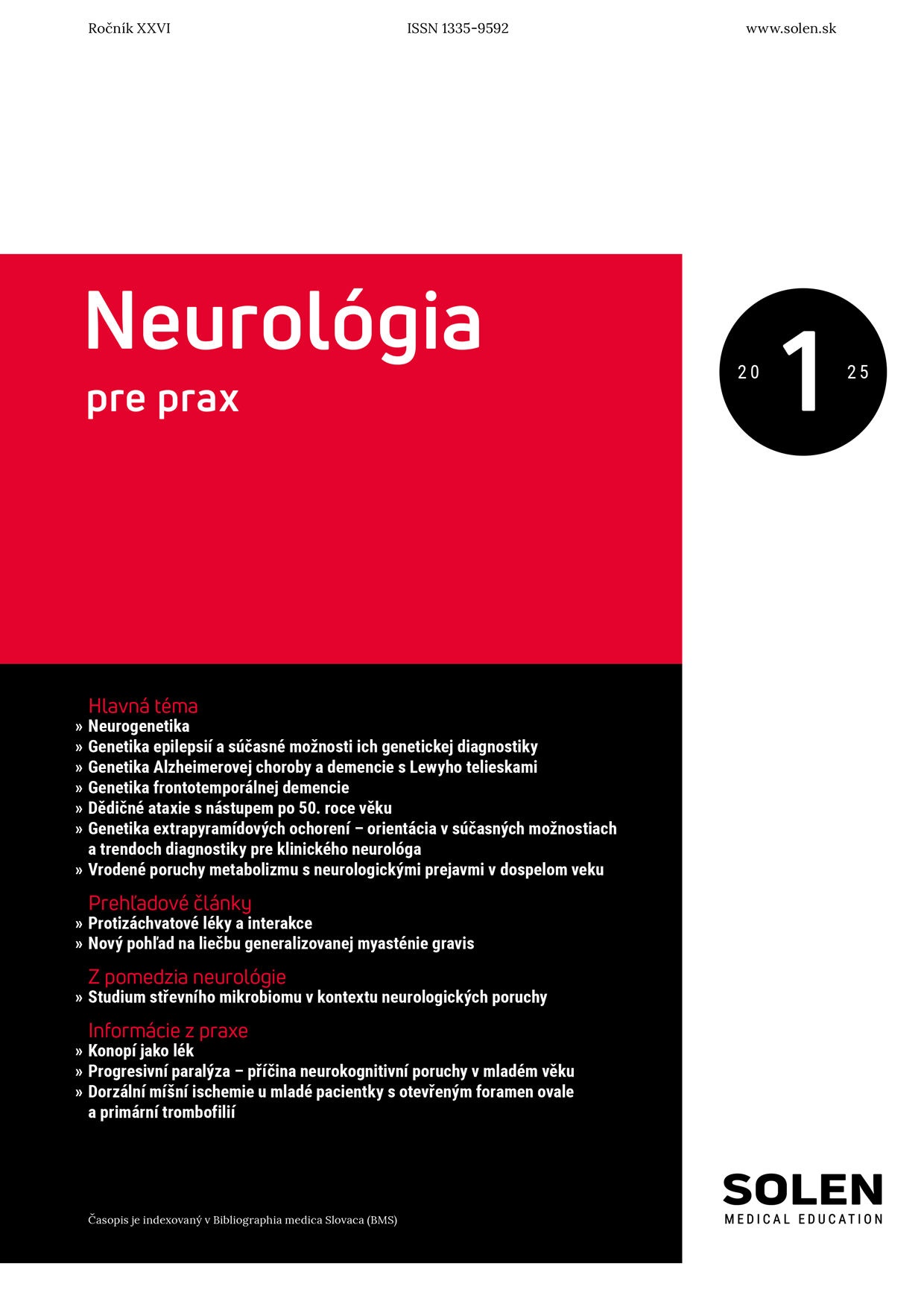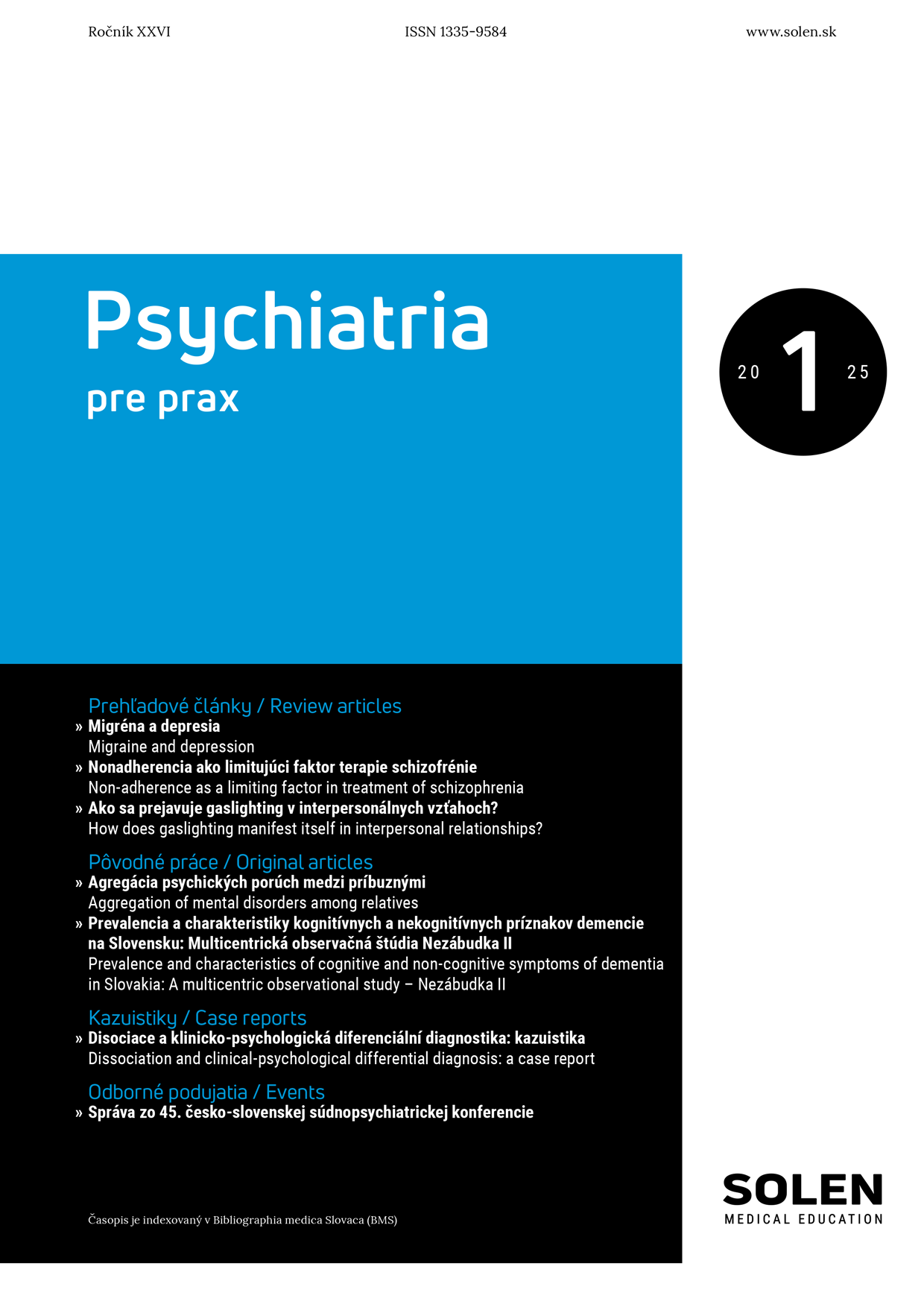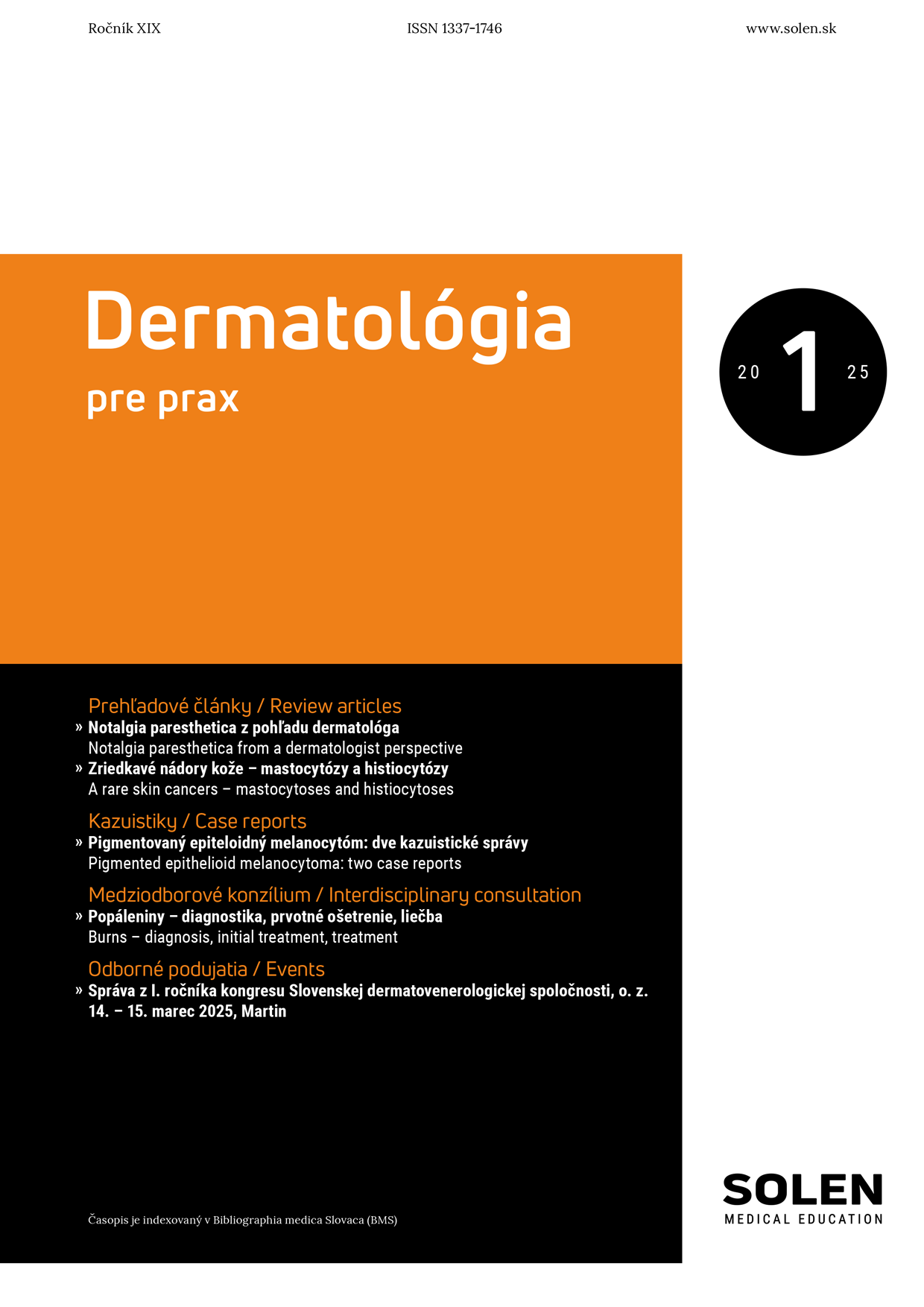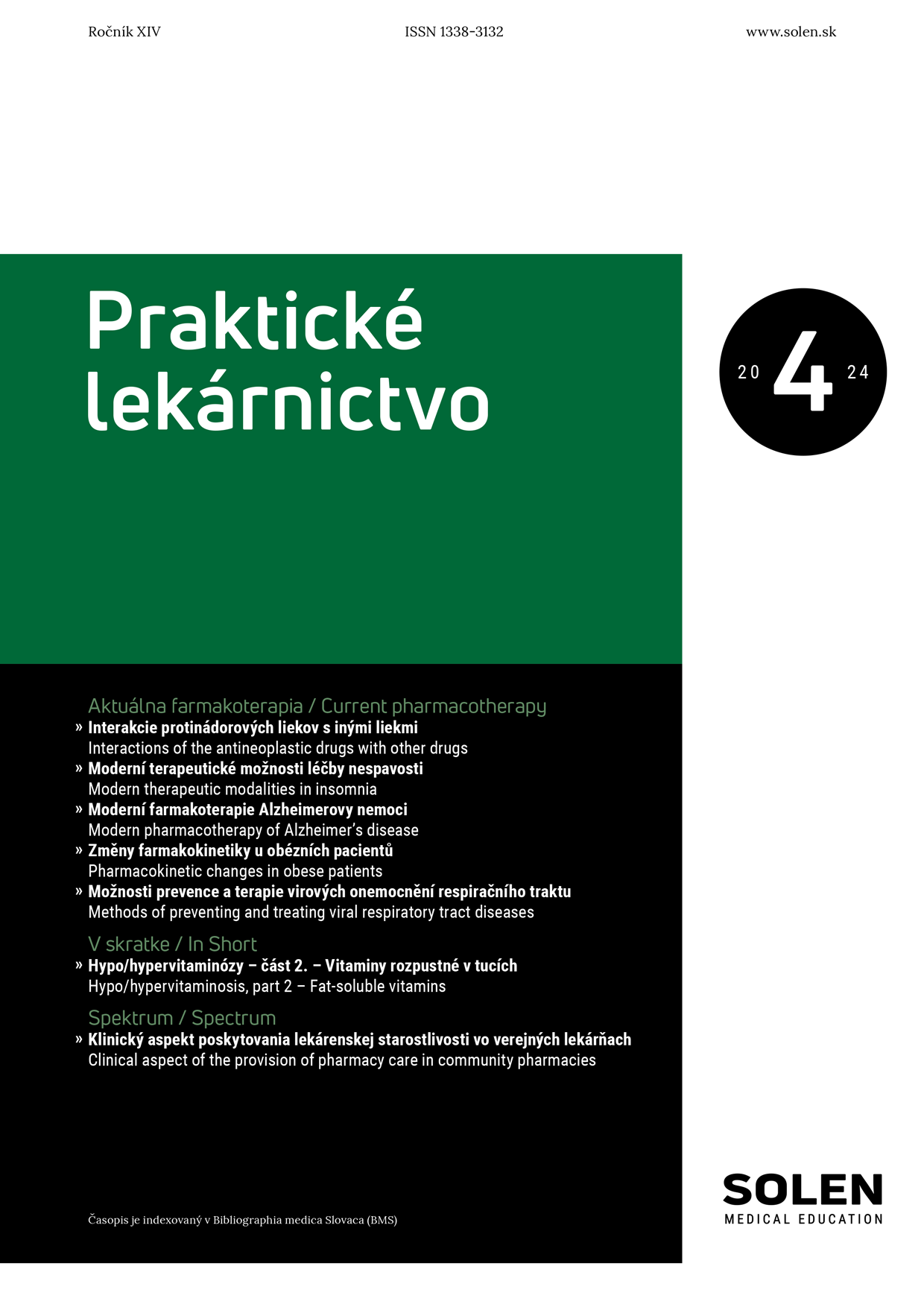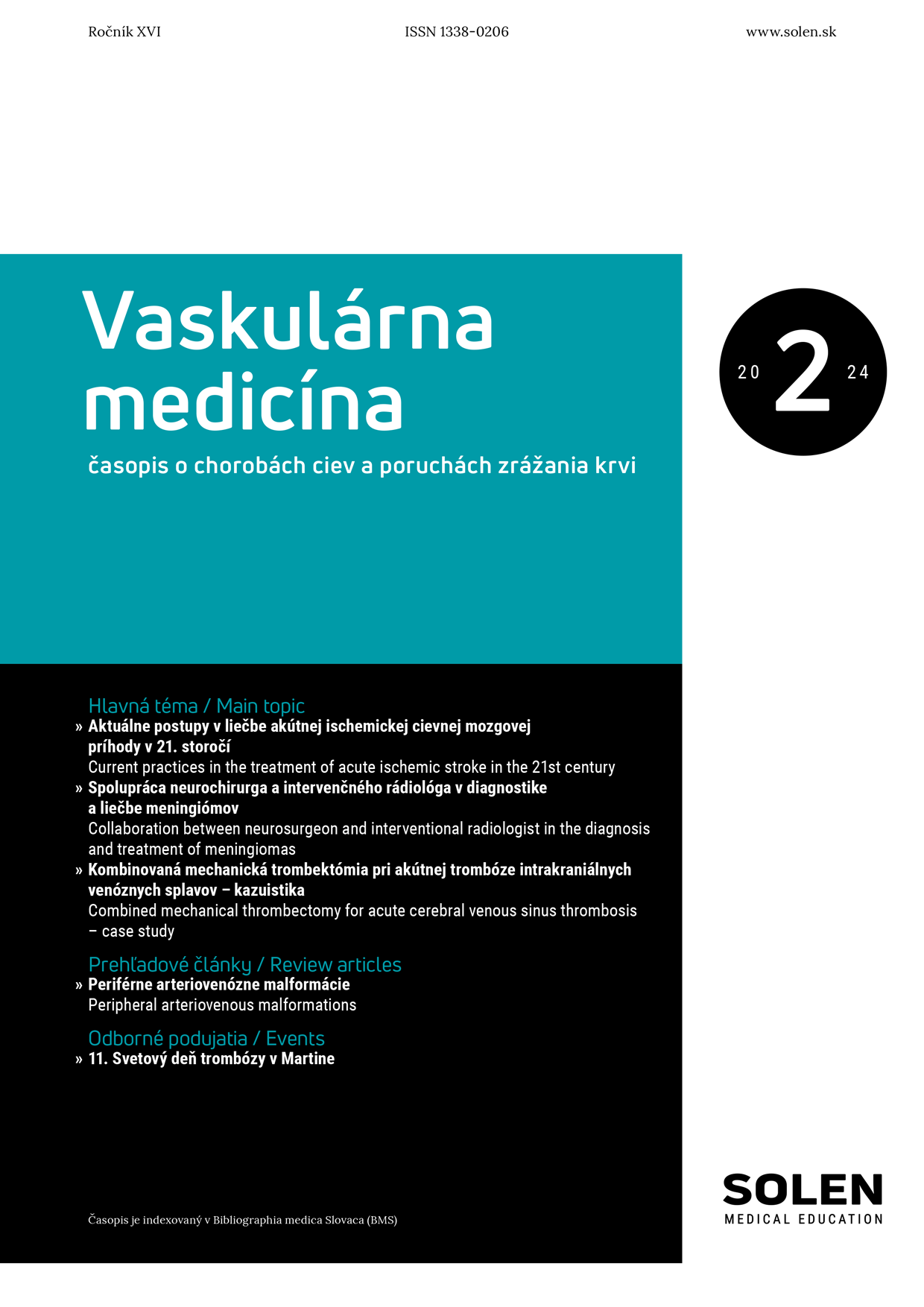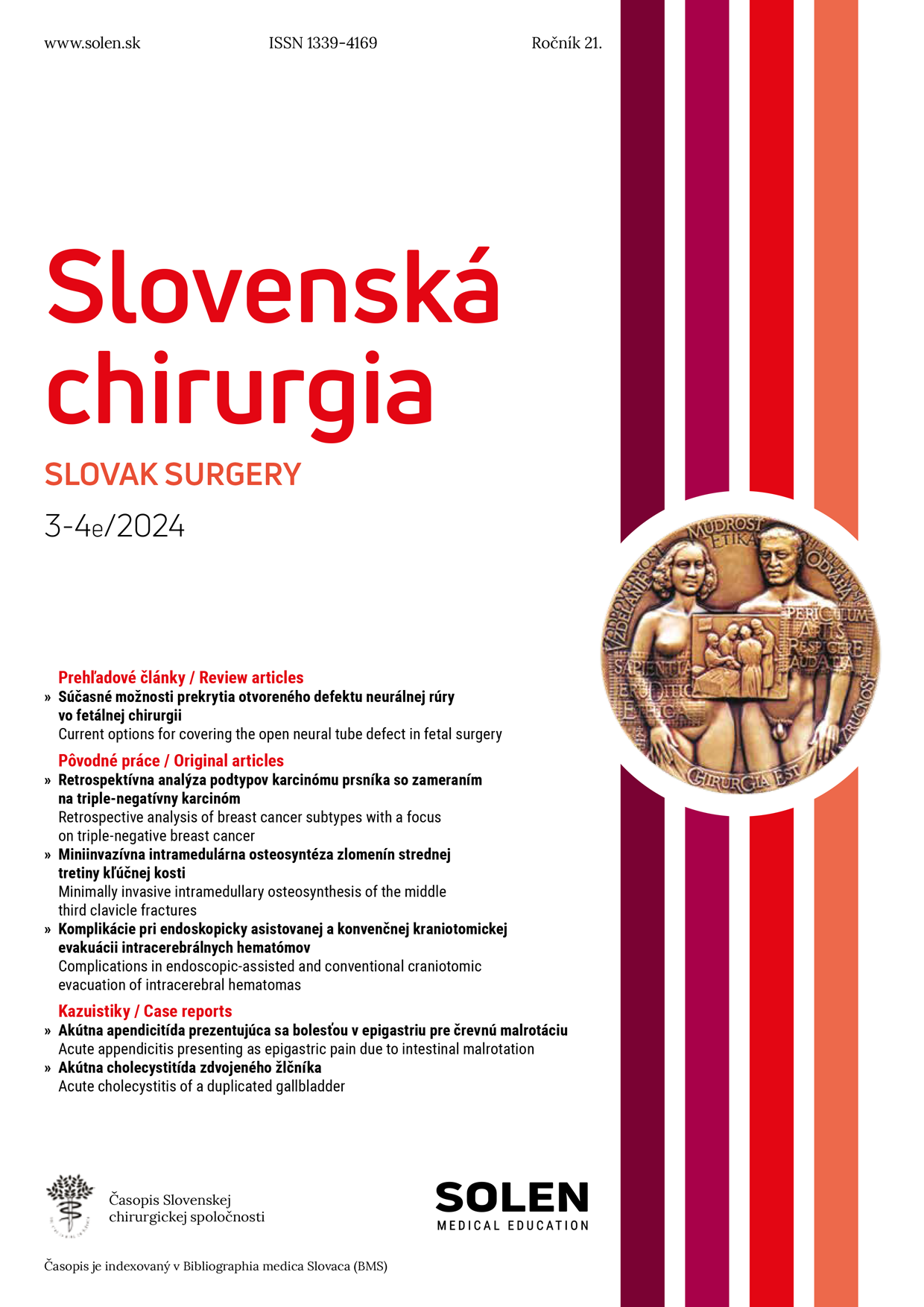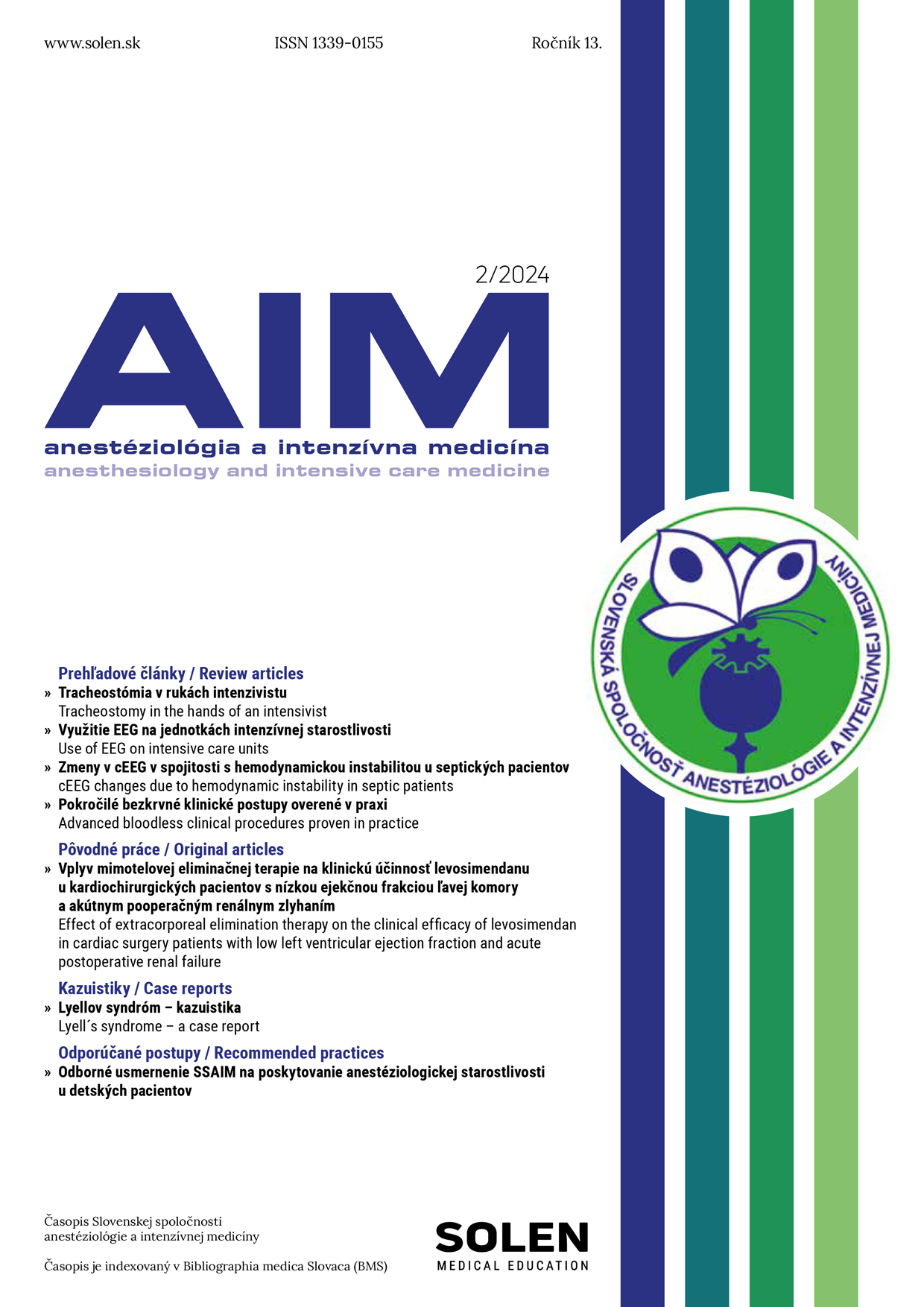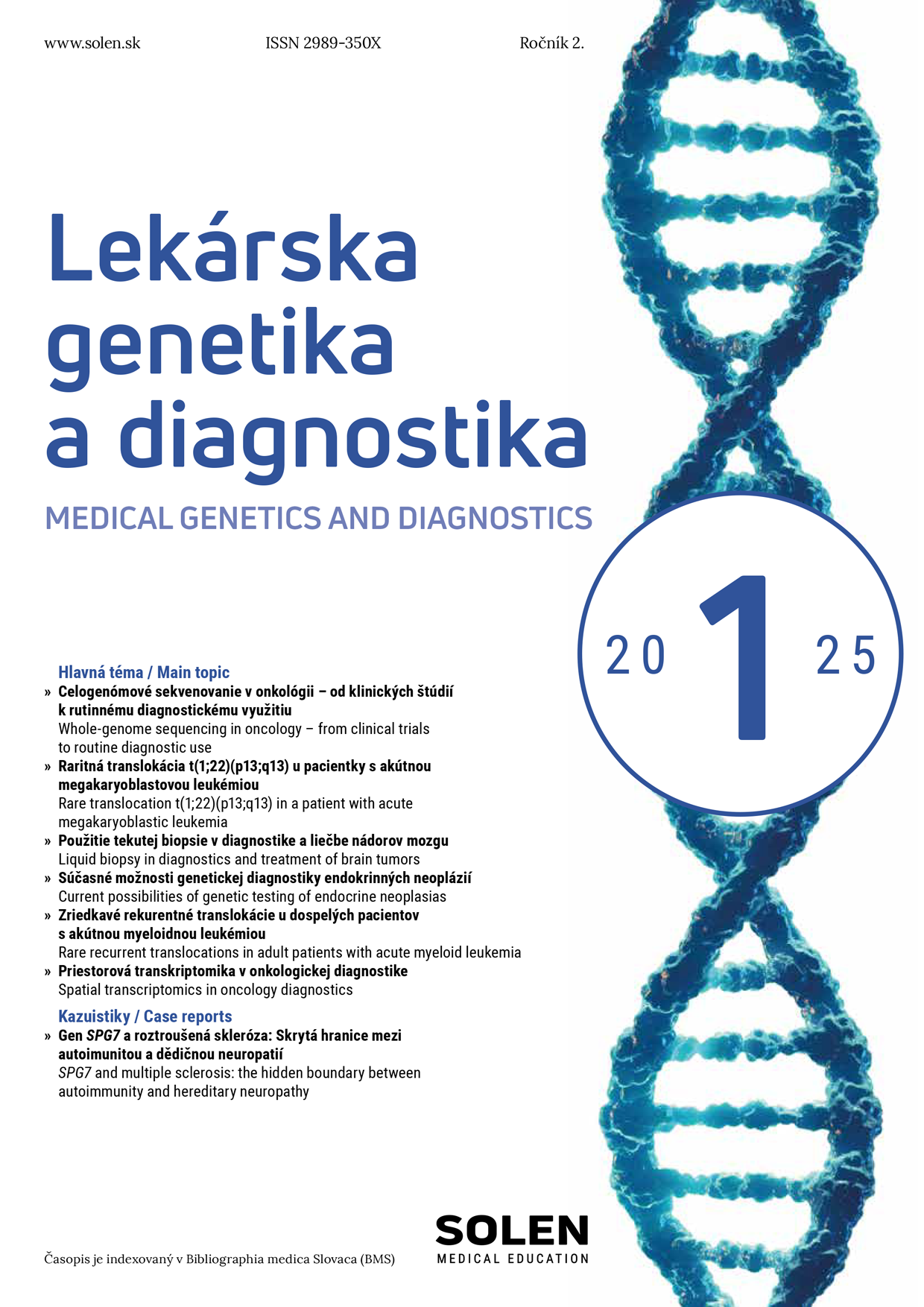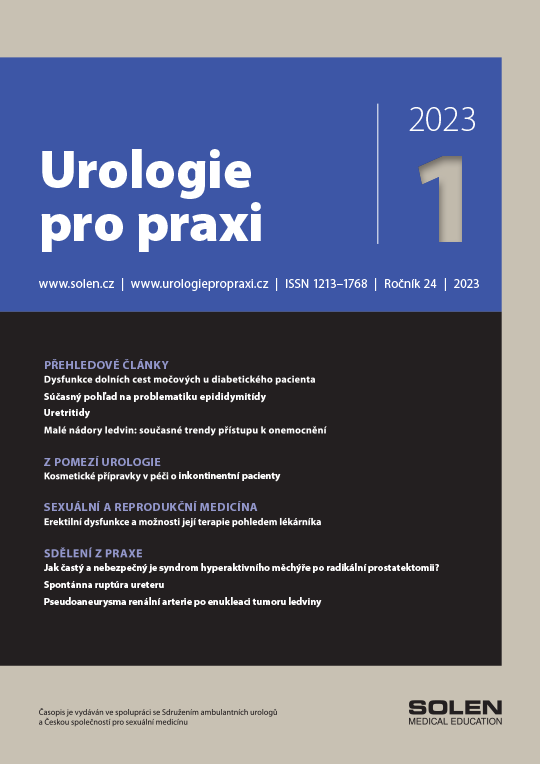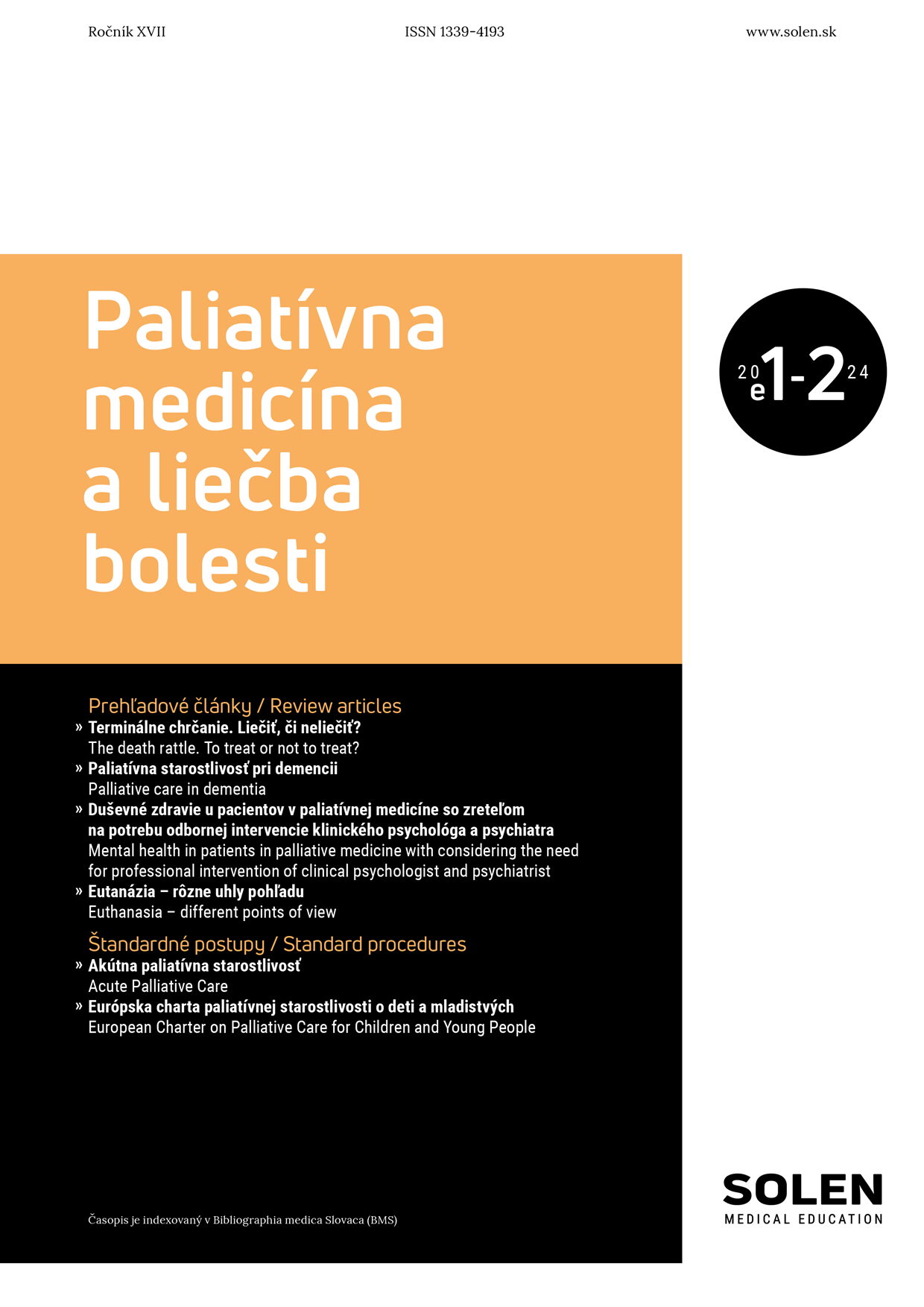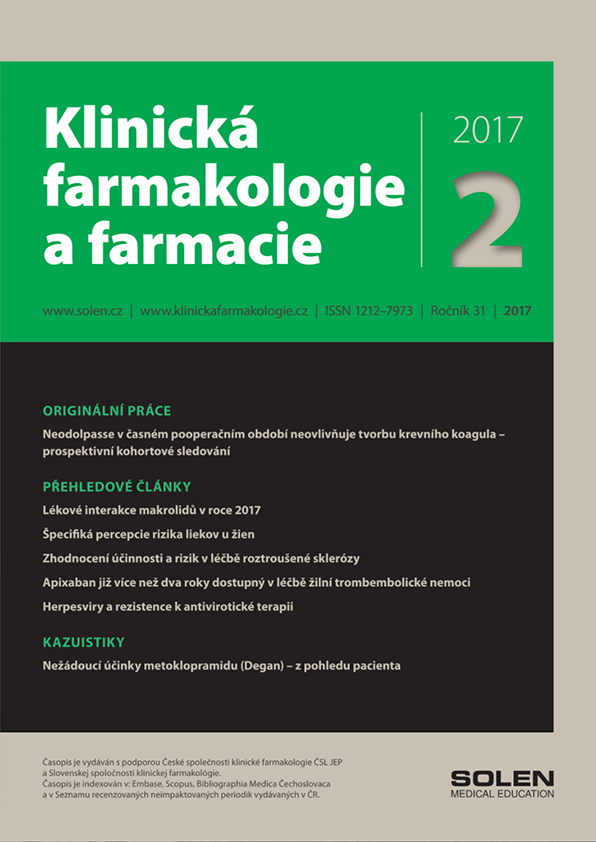Neurológia pre prax 1/2025
Genetics of frontotemporal dementia
The disease currently known as frontotemporal dementia (FTD) has undergone a complex evolution from its first description by Arnold Pick and later by Alois Alzheimer, through the first clinicopathological criteria introduced by David Neary and David Mann, to its current nomenclatural perception as a complex clinicopathological entity. Currently, Frontotemporal lobar degeneration is viewed as a heterogeneous syndrome caused by progressive degeneration of the frontal and temporal lobes of the brain. Clinically, it can manifest as three syndromes of frontotemporal dementia (behavioral variant of FTD, progressive non-fluent aphasia and semantic dementia) but also as so-called "overlap" syndromes involving corticobasal degeneration and progressive supranuclear palsy. Its prevalence is about 10 % among all dementias and 40 % among dementias with onset between 45 and 65 years of age. The clinical manifestation of the different subtypes varies, the common denominator being behavioral disturbances and impairment of fatic, gnostic and executive functions. Mnestic and visuo-spatial functions, although preserved for a relatively long time, are superimposed by personality disintegration, fatic, gnostic and executive dysfunction. Compared with Alzheimer's disease, it generally has an earlier age of onset, a more rapid course and more devastating impairment of individual cognitive domains. FTD has a heritability of more than 30 % according to current knowledge. The main genes involved are MAPT, C9orf72 and GRN. More rarely affected genes are VCP, TDP-43, FUS and CHMP2B. In our article, we focus on the genetics of FTD and the clinic-genetic-pathological correlations. We also aim to provide a plastic picture of how individual mutations affect the molecular mechanisms of neurodegeneration.
Keywords: frontotemporal dementia, progressive non-fluent aphasia, semantic dementia, genetics


